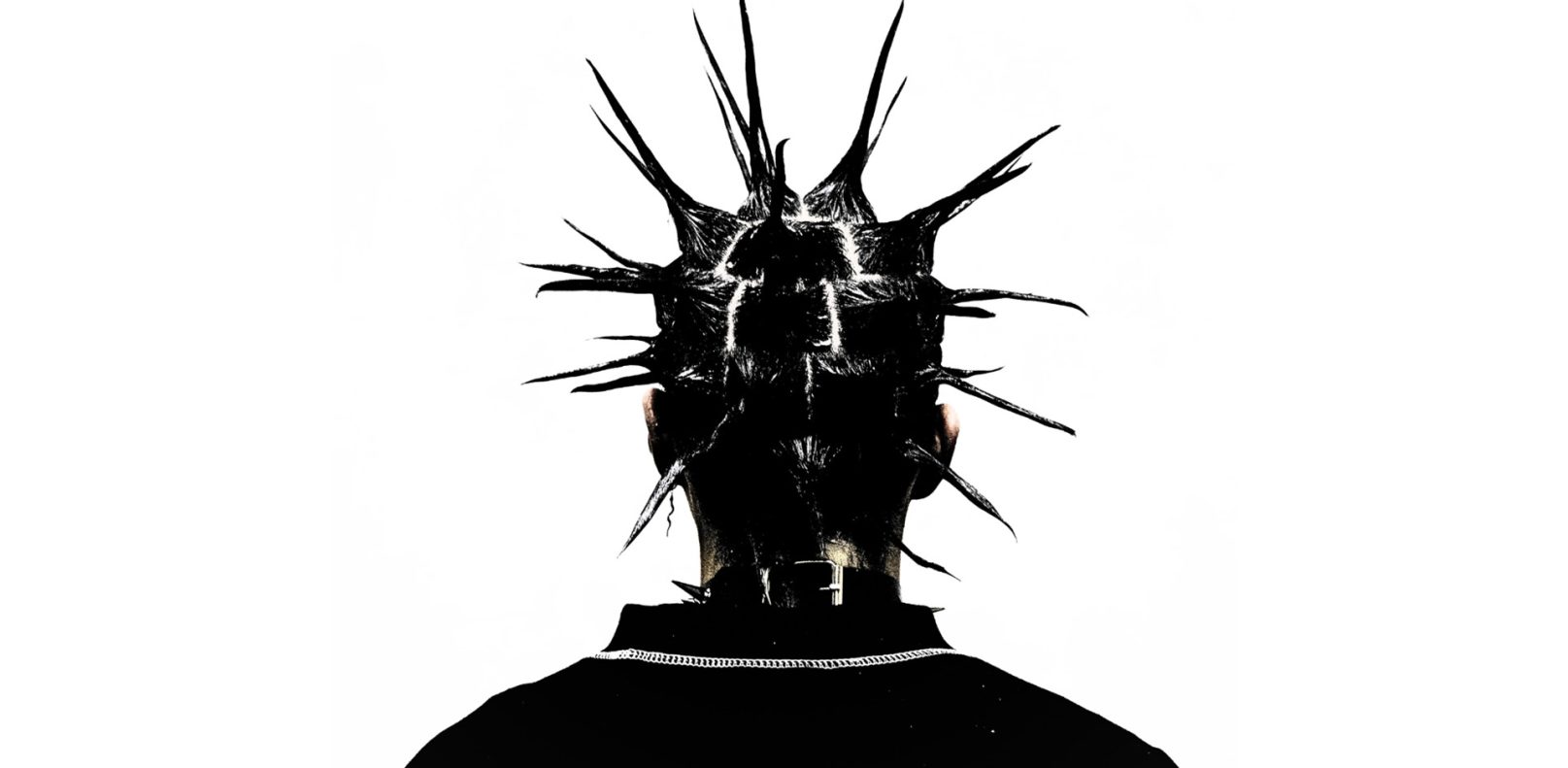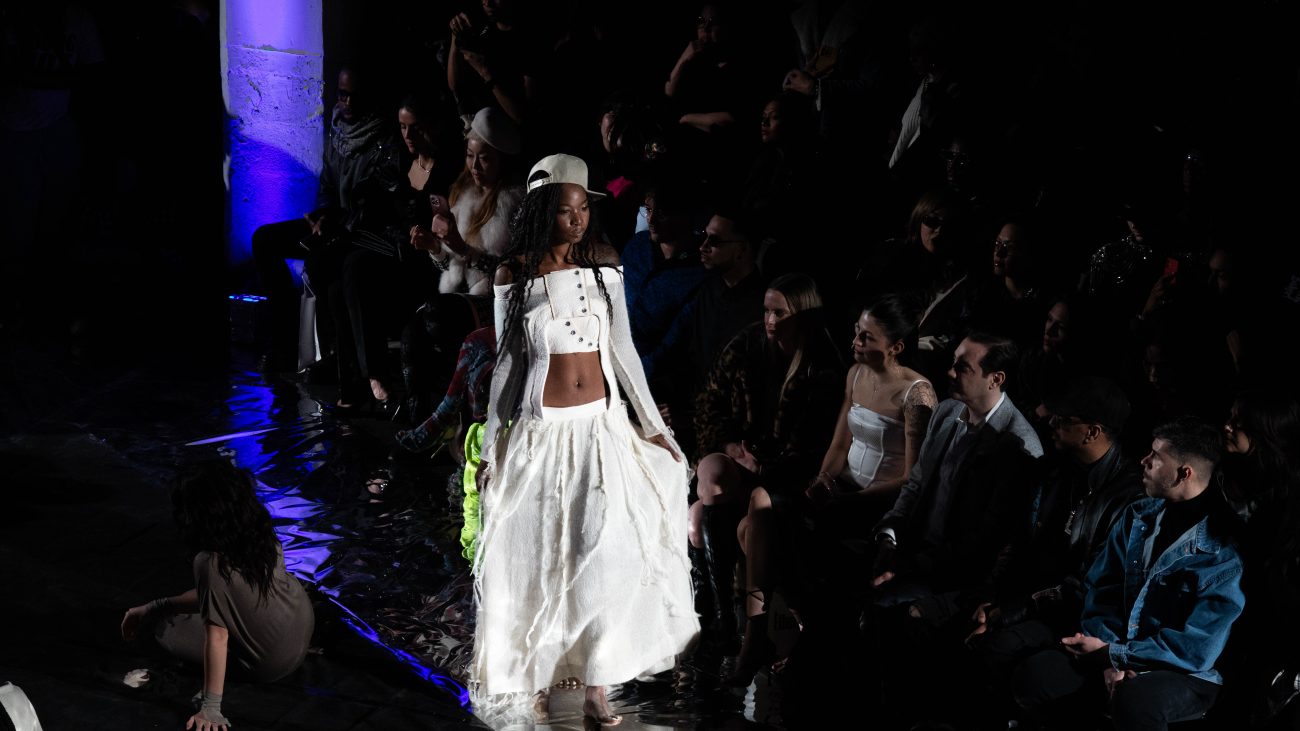
Model Showcasing Sofia Georgia Rothman’s Designs by Selah Pennington on February 7th
We didn’t plan on going to a New York Fashion Week show this year, but somehow, we found ourselves scribbling notes in the dark while models danced barefoot in a pit of sand.
From the moment we walked in, we were surrounded by art—not just on the walls, but in the crowd itself. The audience was a spectacle of its own, each person expressing their creativity through bold, fashion-forward looks as they radiated with anticipation for the night ahead.
The venue, a massive, echo-filled building in the Financial District, felt like a hedge fund’s panic room had been gutted and reincarnated as a nightclub—industrial, moody, and pulsing with energy. Ornate ceilings met flashing LED lights, and the floor literally vibrated with bass. It was part fashion show, part fever dream—like stepping into someone else’s headspace for the night.
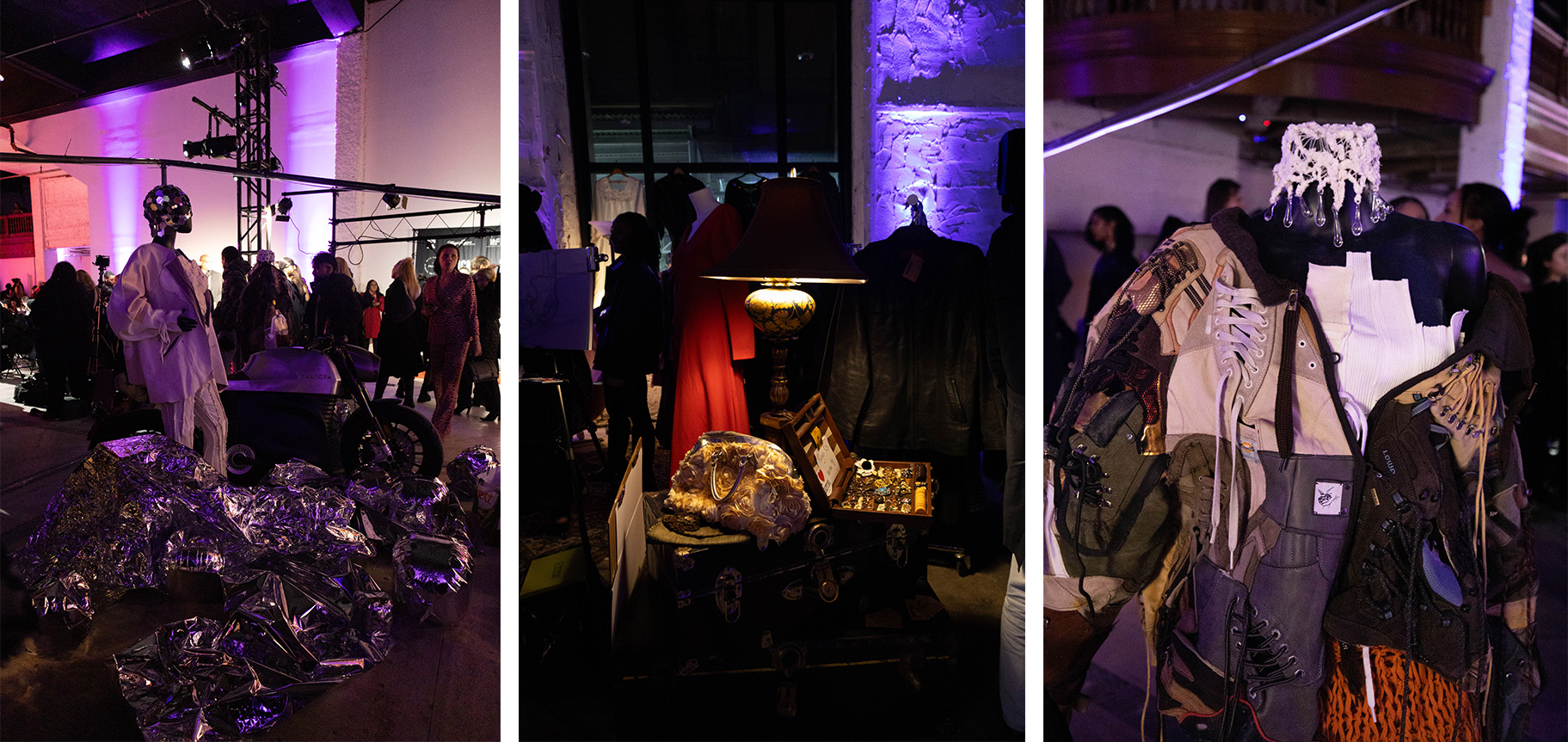
Various Displays Positioned Throughout the Venue by Selah Pennington on February 7th
We first heard about the show through Danny Colon, the owner of Electrix Vintage, who had a pop-up booth at the event. Amid the flashing lights and sensory overload, his rack of clothes felt like an anchor. You could step off to the side to shop, interact, and converse with others—a small pocket of calm in the chaos. Other vendors added to the mix: one handed out tiny bottles of artisanal liqueur in flavors like coriander and Doritos (yes, Doritos), while another sold face chains—many of which had made their way onto the runway. For the first time, fashion felt real. Not filtered through a screen or trapped in a pristine showroom—it was right there in front of me, moving, imperfect, alive. I wasn’t exactly part of it, more like drifting around the edges, but that somehow made it even better.
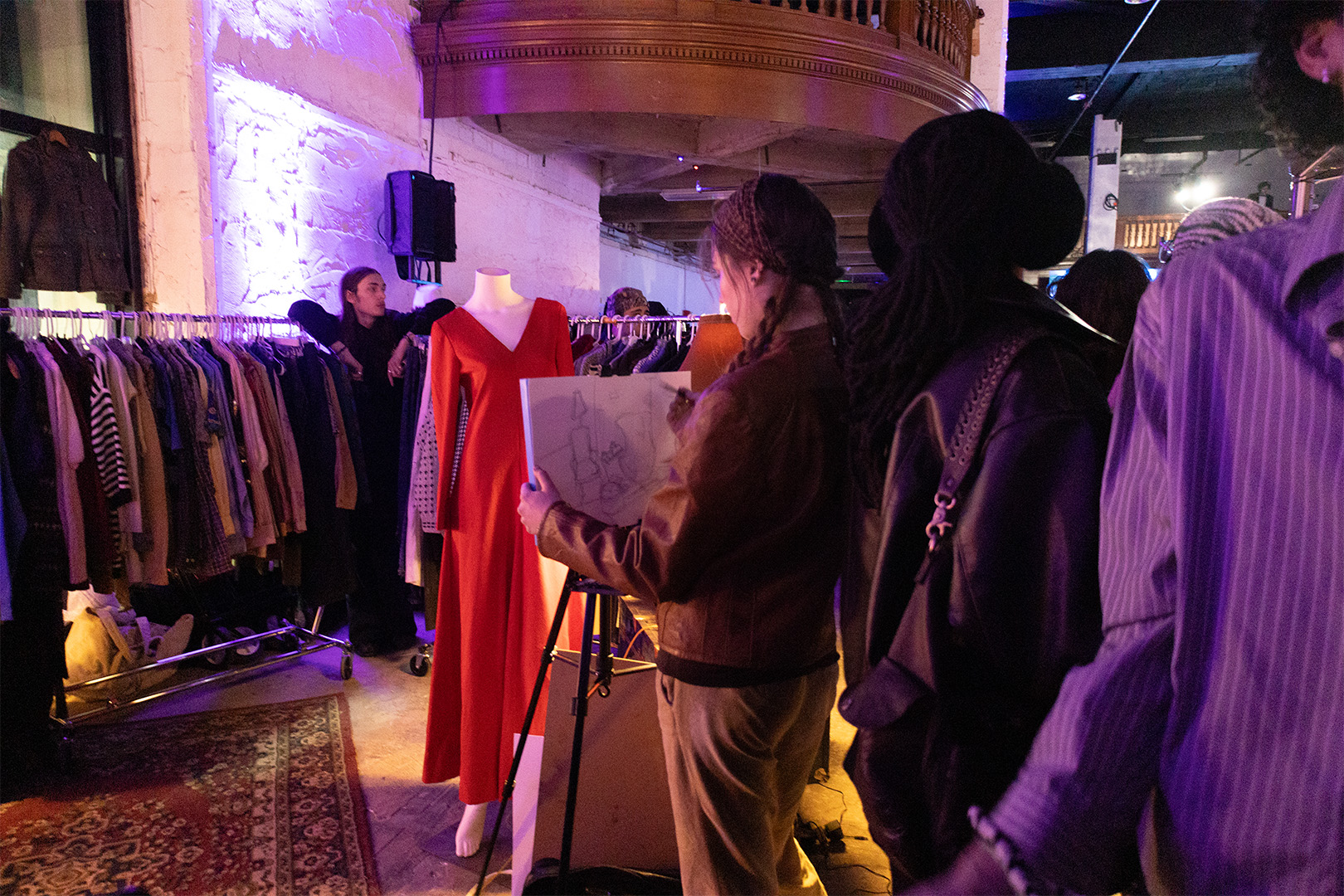
An Artist Sketching Danny Colon’s Pop-up Booth by Selah Pennington on February 7th
At one point, we stumbled onto a tiny balcony perched just above the runway, accidentally wedged between the models and the backstage chaos. It turned out to be the best seat in the house. From there, you could see everything—the lineup of models, last-minute touch-ups, deep breaths before the walk. In true behind-the-scenes fashion, we even ended up in the same bathroom as the models: two stalls for what felt like a thousand people, perfumed with a mix of hairspray, perfume, and mild panic. If this is what the New York fashion world looks like up close, we’re going to need a subscription box worth of Lysol wipes.
When the show began, we expected the usual runway routine—models strutting out one by one, showcasing the designs, then disappearing backstage. But the moment the lights dimmed and the first model emerged—limping with an eerie, post-apocalyptic gait—we realized this wasn’t going to be an ordinary fashion show.
Emerging designer Zombii House made a striking entrance with a debut collection that made you feel like you just landed in an episode of The Walking Dead. Models moved with eerie, zombie-like precision, transforming the runway into a fully immersive experience where each transition felt intentional, haunting, and alive with narrative tension.
Suddenly, the runway became a stage and the models, characters. Disruptive, yes—but on purpose. At one point, another model broke formation mid-walk, tackled a fellow model, and threw them over their shoulder without missing a beat. This wasn’t just fashion. It was world-building.
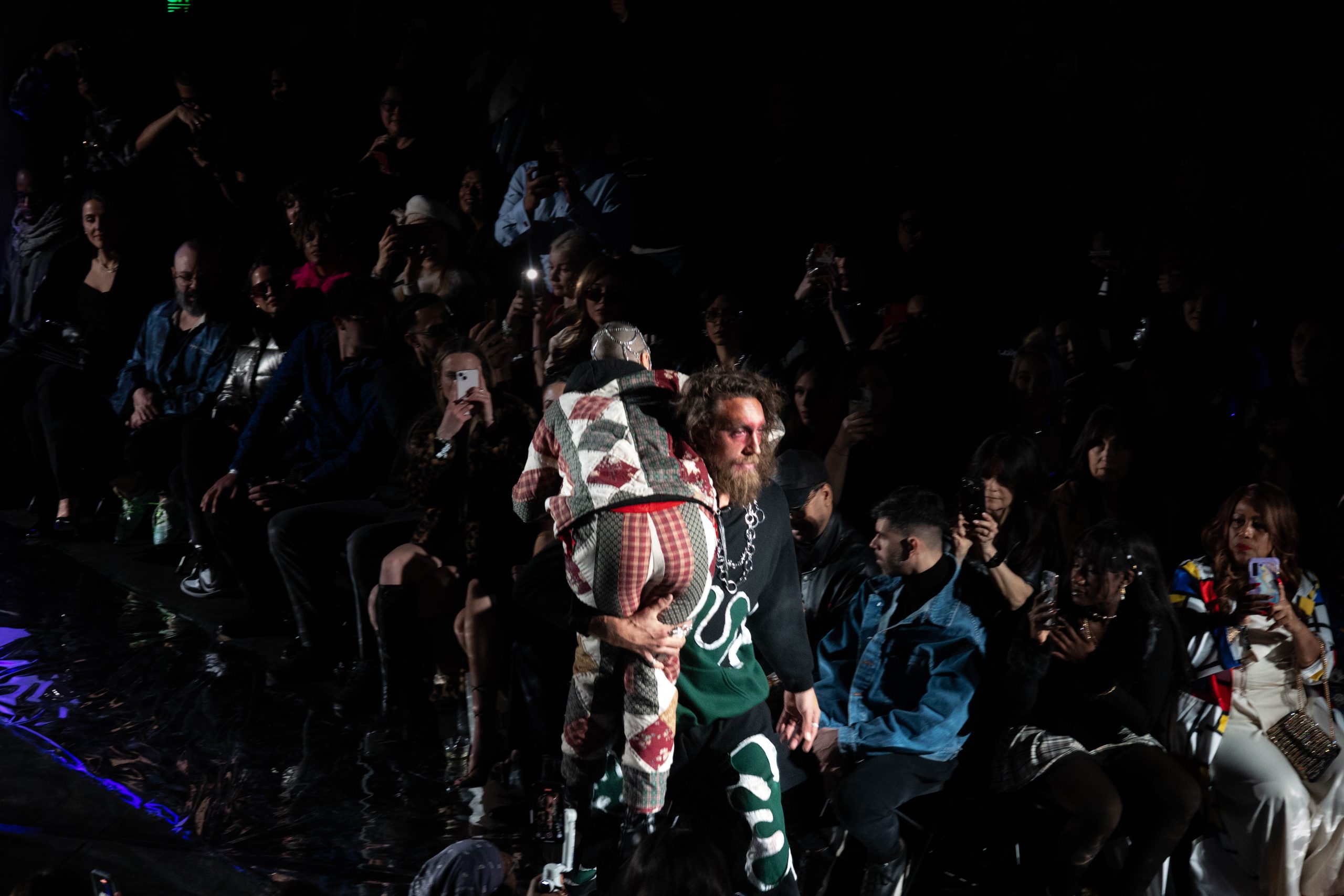
Models Performing for the Zombii House Collection by Selah Pennington on February 7th
One of the designers, Sofia Georgia Rothman, brought the spirit of the desert to life with a presentation that transcended fashion.
Four models emerged with an ominous, almost ritualistic presence, each carrying a mysterious bag whose contents remained unknown. As they moved solemnly down the runway, barefoot, they took their positions and began pouring the sand into neat piles beside them. Then, in a slow, deliberate motion, they sifted it through their hands—graceful, meditative, and haunting. Throughout the segment, they remained in formation, grounded, as other models passed through, weaving around them like ghosts in a surreal, but graceful tableau.
The performance was grounded in Rothman’s deep connection to New Mexico and shaped by her personal journey.
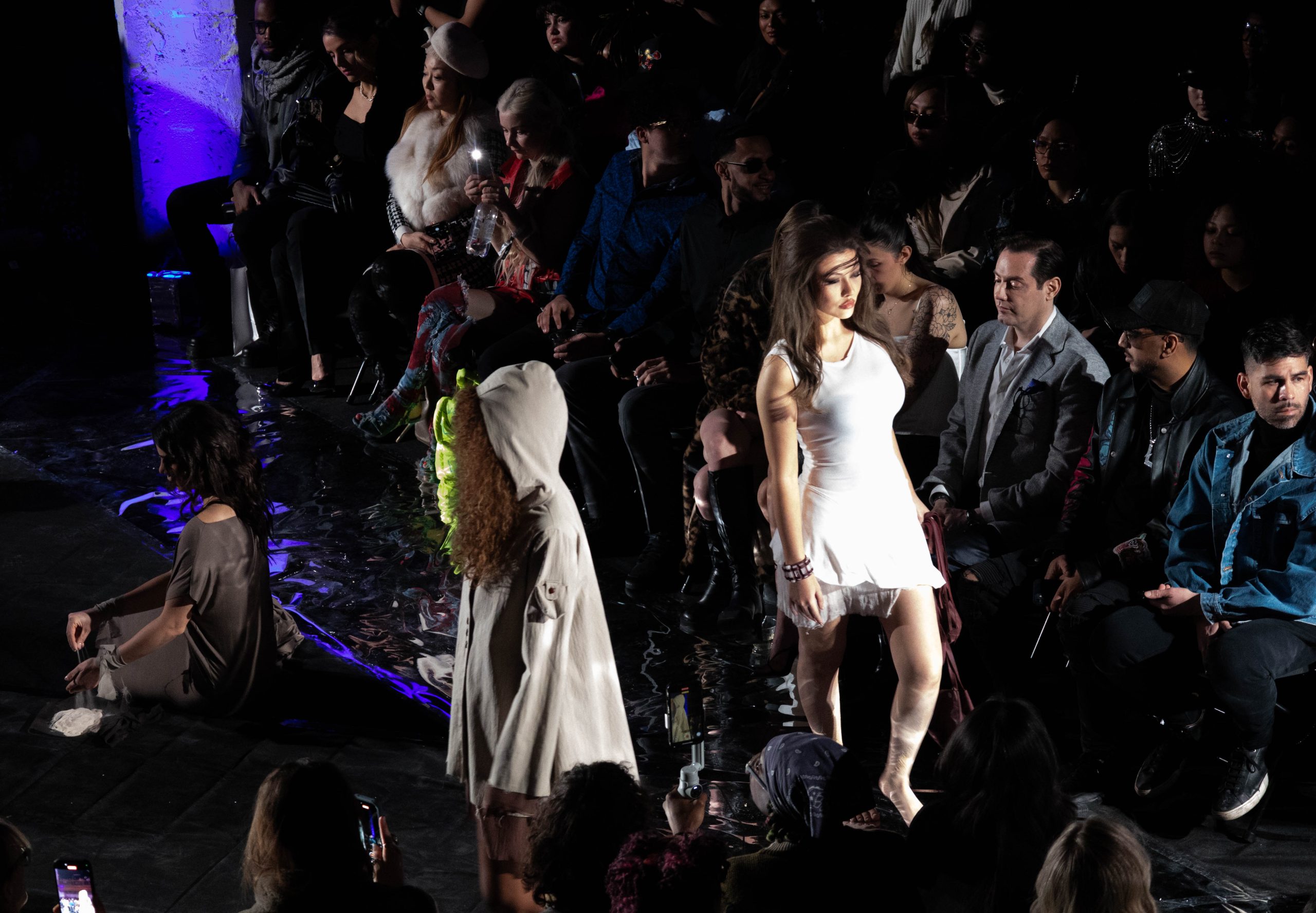
Models Performing for Sofia Georgia’s Collection by Selah Pennington on February 7th
It wasn’t just about what people wore—it was about how they moved and existed in space. One model had his hair twisted into black spikes that shot upward like obsidian shards, styled by Keielle Beauty—a talented hair stylist based in Jamaica, New York. When they passed and let us touch it, we were stunned by how sharp it felt—more sculpture than style, almost like a weapon. Every hairstyle in the show was clearly well thought out, each one reflecting the designs with meticulous attention to detail. You could tell hours of care and craftsmanship went into making sure each look held up both creatively and technically. It might take years to wash out the mountains of glue it took to get those liberty spikes that precise and sharp—but honestly, it was worth every drop.
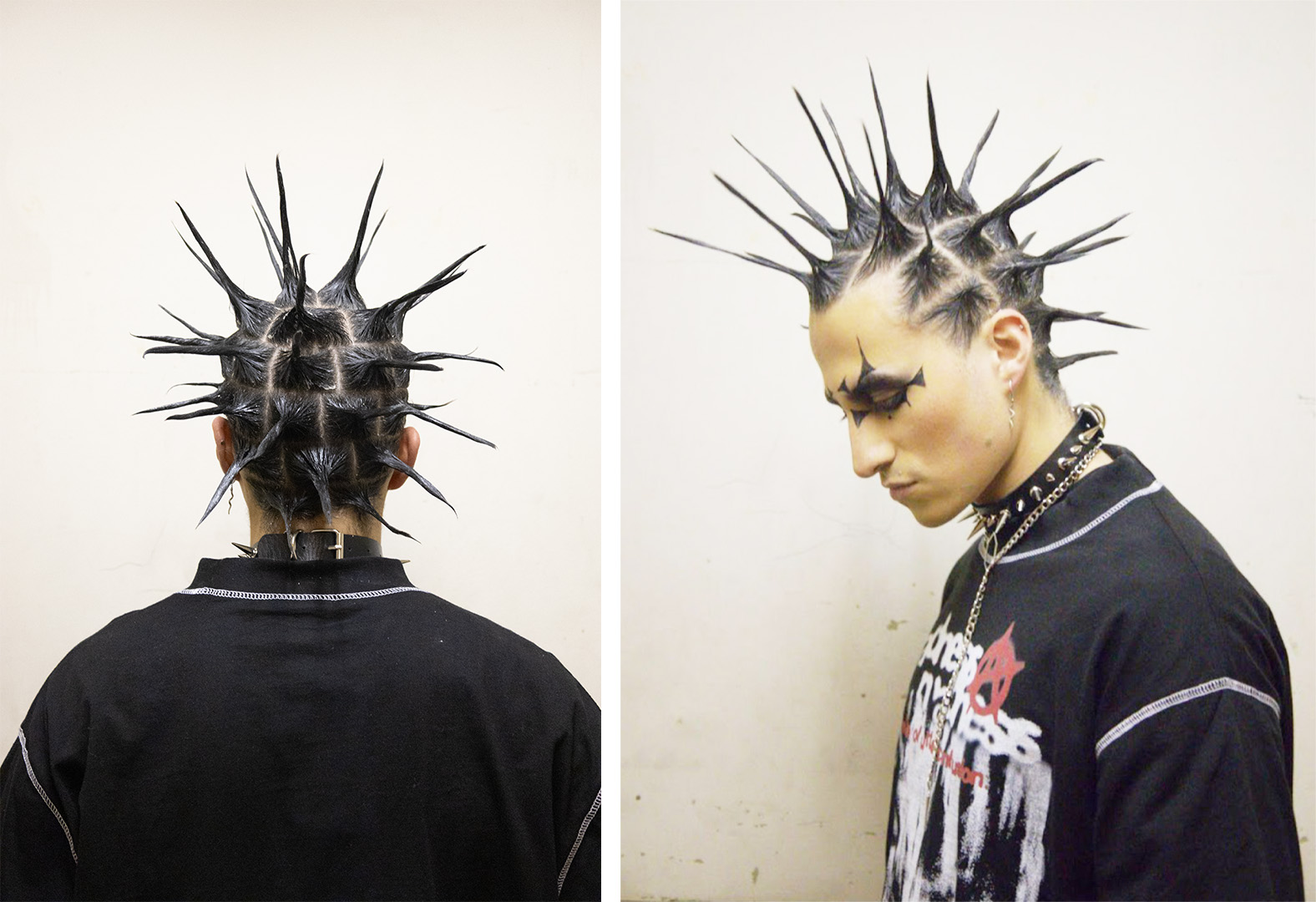
Model Backstage Wearing ‘Works of Madness’ Designs by Selah Pennington on February 7th
Throughout the show, the energy never dipped. The venue pulsed with spontaneous performances—singers, dancers, and sometimes both at once. At one point, a giant green bear stormed the stage, dancing wildly and launching cash into the crowd with a money gun. Completely random—yet somehow, it worked. The absurdity only added to the magic, like a fever dream you couldn’t help but giggle through.
There wasn’t a single dull moment or bored face in the room. Everyone kept their eyes locked on the stage, afraid to blink in case they missed something unforgettable. And if your bladder was full, good luck—because odds were, you’d miss a contortionist dance number that made you question why your joints don’t bend like that. The unpredictability was constant, and that’s exactly what made the entire experience electric.
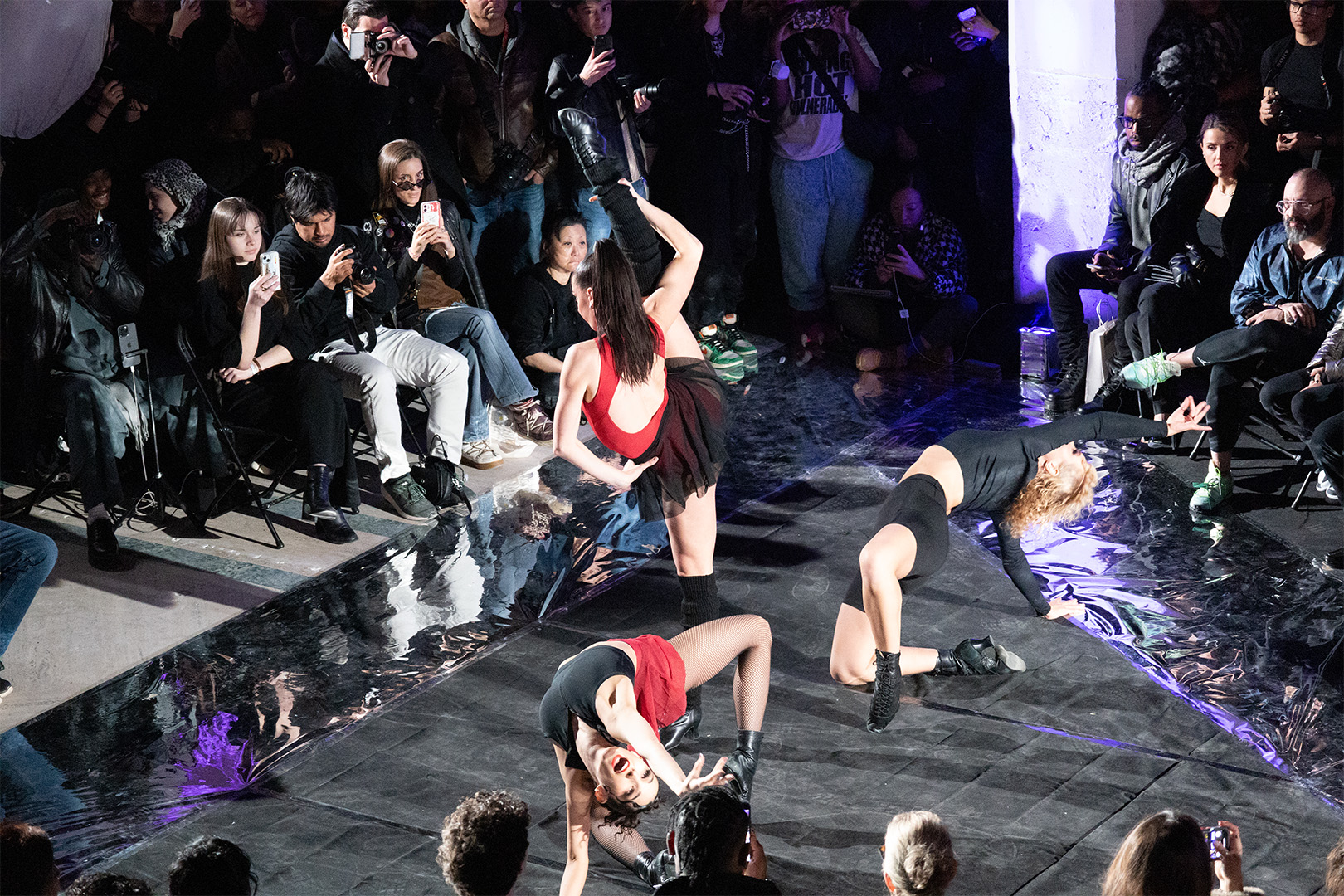
The ‘Capezio’ Dancers Performing by Selah Pennington on February 7th
The same sense extended effortlessly into the fashion itself. Each designer brought a distinct point of view, creating a runway experience that was wildly diverse yet unexpectedly cohesive. Some looks leaned into eerie, end-of-days drama, while others burst with rhythm, color, and rich layers of texture. It felt like watching a series of short stories unfold—each with its own mood, message, and aesthetic.
Even the dancers weren’t just performers in costume—they wore pieces from Capezio, the historic dancewear company founded in 1887, known for its professional grade products.
Regardless of experience, each designer delivered with boldness and clarity, transforming the runway into a living gallery of imagination. Each experience was creative and well-thought out, personalized to the designer. The result was a powerful celebration of fashion’s ability to disrupt, enchant, and leave a lasting impression.
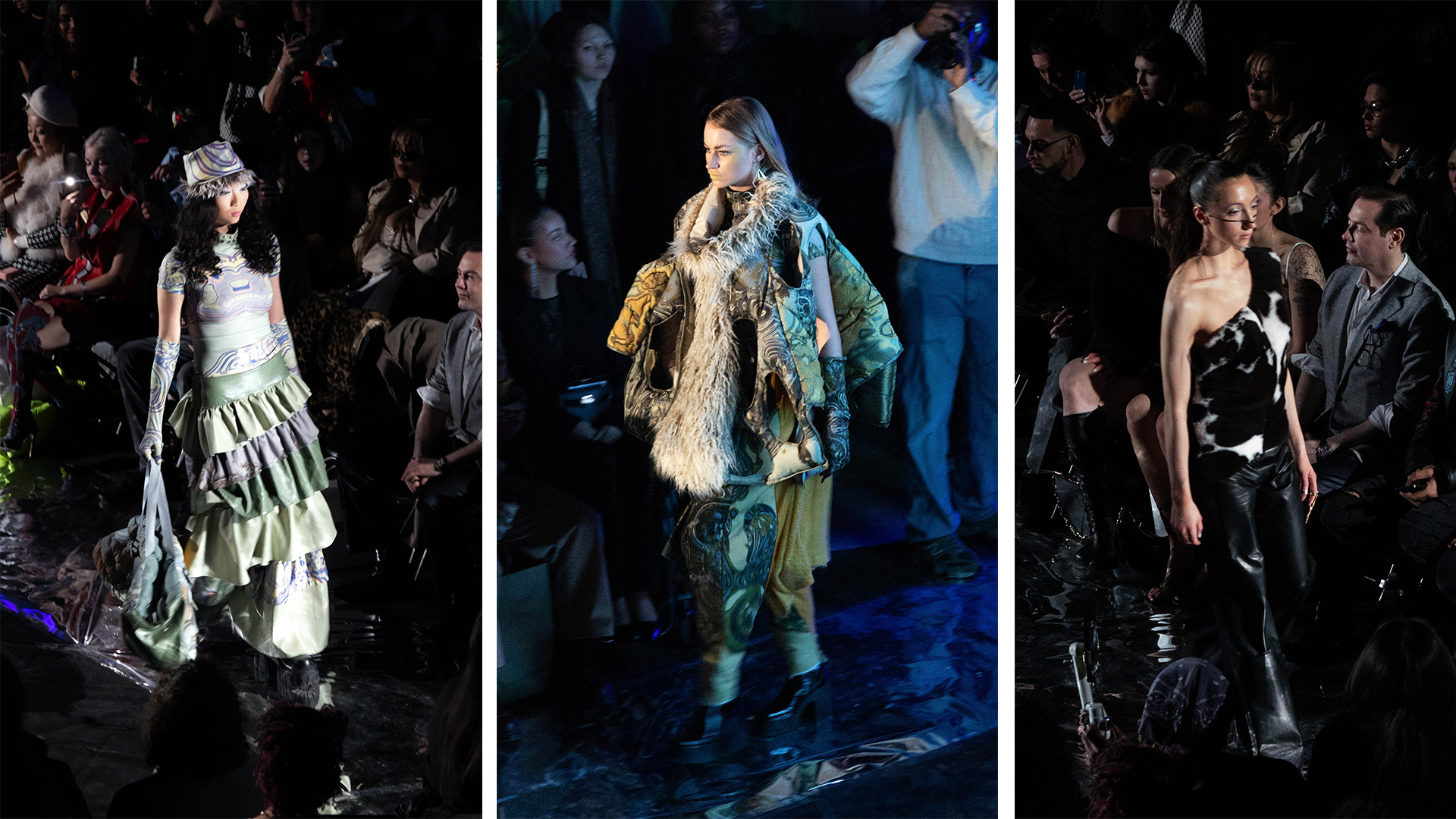
Models Presenting Rakee Chen’s and Heira’s Designs by Selah Pennington on February 7th
The Ethereal Show transformed what began as a casual night into something unforgettable. Honestly, we could write a Harry Potter–length book about the experience—from the incredible people we met to the presentations before and after the show, the live performances, the models, the audience interaction—it was nonstop magic. You could feel the dedication behind it all: the sleepless nights, the endless hours of preparation. And every second paid off.
For our first NYFW experience, it was nothing short of extraordinary. Vendors, performances, and raw creativity blurred together into something that felt like a living, breathing art piece—real, chaotic, and deeply felt. It was truly a performance of a lifetime.
Contributing author: Jaylyn Johnson

